Affordable tools and materials for veneering
Working with veneer doesn't have to break the bank.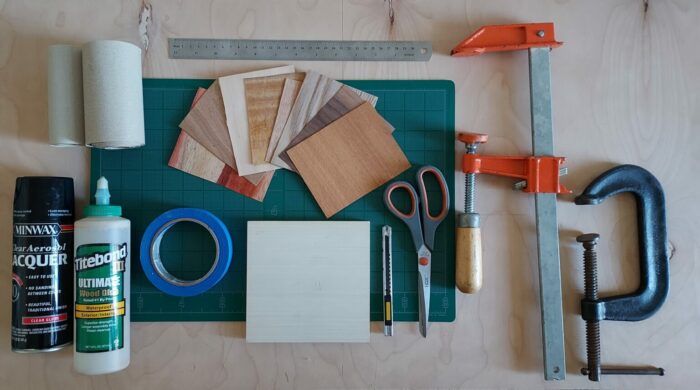
In this blog post I’m going to talk about tools and materials you will need to start working with veneer. Because everyone has varying levels of accessibility, I am not going to name drop expensive tools or suggest any purchases. Fancy brands do not make the maker!
1. Knife
The important thing about the knife is having a sharp blade. I use a knife with break-off blades and will refresh the blade multiple times during a project. If you have access to a single-blade knife, you may just have to work slower when it gets dull. I used a box cutter when I first started working with commercial veneer because it’s what I had.

2. Clamps
I understand the train of thought that makes you believe a stack of books pressing down the veneer will work. Embarrassingly, I learned from experience that all my yearbooks and art history books did not work. Plastic pump clamps do not work well either. Go for any kind of metal clamp. Clamps are expensive, but old rusty ones still work! For affordable options check out flea markets or garage sales.

3. Cutting mat
Shopping for a cutting mat is a little strange because the prices vary so much depending on where you buy it. Shop around and compare prices, check out quilting stores, craft stores, college stores, and hardware stores. It’s hilarious that an architect and a quilter can have the same mat but pay different amounts. If you do not have access to a mat, you can use a piece of scrap plywood. Just know it won’t last long.
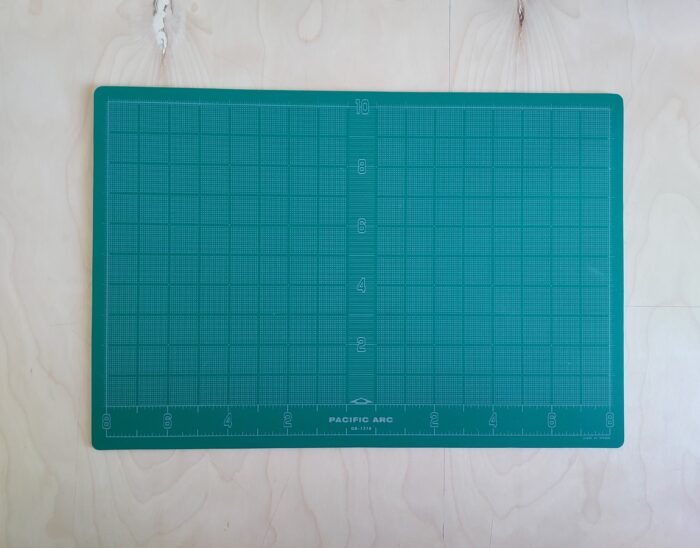
4. Tape
You will need more tape than you realize. I use blue painter’s tape but you can also use green tape.
5. Substrate
The substrate is the piece that you glue the veneer to, and it can be solid wood, plywood, MDF, etc. I use plywood and cut it myself to the desired size. Plywood sheets are becoming more expensive but I usually pay about $40 per sheet and cut it into 8 to 10 pieces. If you do not have access to a shop to cut your material, you can find precut options at craft stores, art stores, online retailers, and some hardware stores. Prices vary depending on size, shape, and quantity.

6. Veneer
In terms of veneer, the larger the quantity you buy, the cheaper it is. If you are just starting out it can be difficult to justify buying a huge box of veneer if you don’t know if you like the medium yet. However, it is just as difficult to justify the high price of the small sample pack. When buying a sample pack or a shorts box, compare the square footage to the price. Some companies will tell you the number of sheets but the sheets are quite small. These packs can cost anywhere from $20 to $60. I buy veneer from Certainly Wood, but there are a lot of other specialty veneer manufacturers. Often these manufacturers are more than happy to talk on the phone about your needs. You can also find veneer packs at online retailers and some specialty lumber stores.
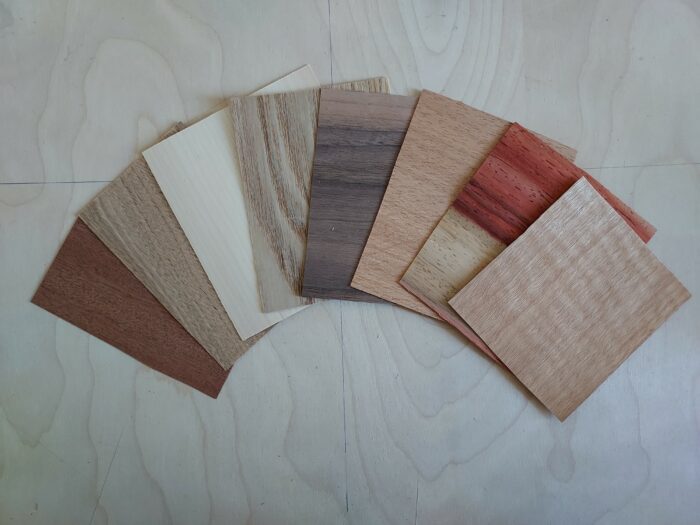
7. Glue
Any wood glue or epoxy will work. I use wood glue because it has water in it and the moisture will swell the fibers and tighten the seams. I prefer Titebond III because it is brown and if I miss a spot sanding then it is not glaringly obvious. Use what you have. Be aware, though, that glue does go bad, so if you have a bottle in the back of your cupboard that’s been there a while make sure to do a test.
Other things you will need include a ruler, scissors, sandpaper (I use 120 and 220 grits), and your choice of finish (which I will talk about more in upcoming blogs).
Obtaining tools and materials can be very expensive, especially for a beginner. Unfortunately, there is a lot of financial shaming and gatekeeping in the craft world. People have said some very insensitive things to me about what I could afford. I’m here to tell you that expensive tools are fun but the joy of creating is even more fun! If you are starting out then use what you have; invest later if you want.
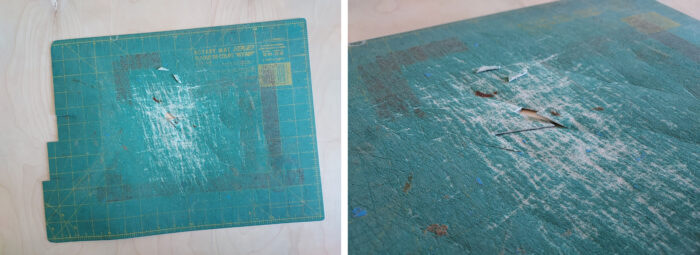
 |
Veneer through a lens of affordability and fun |
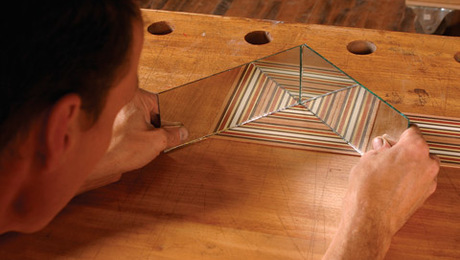 |
Make Geometric Patterns with Veneer |
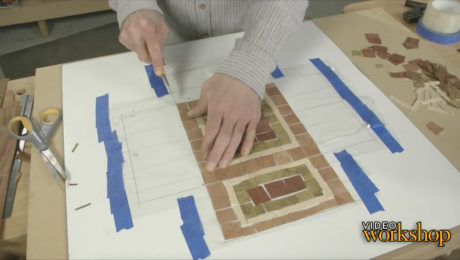 |
Create Mosaic Patterns with Veneer |
Fine Woodworking Recommended Products

Whiteside 9500 Solid Brass Router Inlay Router Bit Set

Bahco 6-Inch Card Scraper






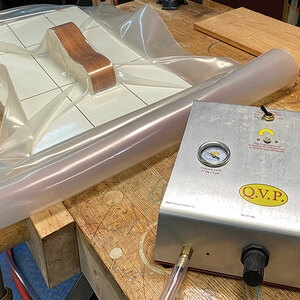






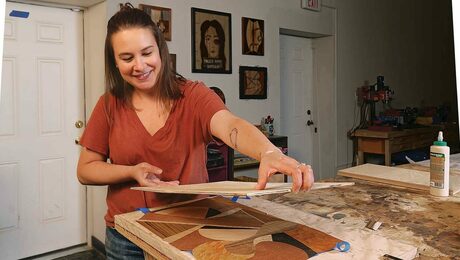








Comments
Great Blog, I have been around woodworking in one form or another most of my life. From helping my father build new kitchen cabinets for our house as a youngster to being a partener in a kitchen and bath design and cabinet company in my fourtys and now trying to learn to build quality furniture in retirement.
All that said, there have been times I have wanted to try something like carving and several times I have thought about adding some veneer to a project. Everytime I would get one of those thoughts, I would think back to articals I have read about it. Then I go over all the specialized tools, curved tooth, double sided, crooked handle saw, roller, press and special glue that sounds about as hazardous nuclear waste. After that I decide I don't need anymore tools or materials that I will never use again and never try it.
I think we need more ways to lower the bar to try something before we buy all the professional tools, if possible, without making the job so frustrating that we never want to try it again. I realize sometimes that is not possible but I think I'm going to try some veneer work now.
Log in or create an account to post a comment.
Sign up Log in